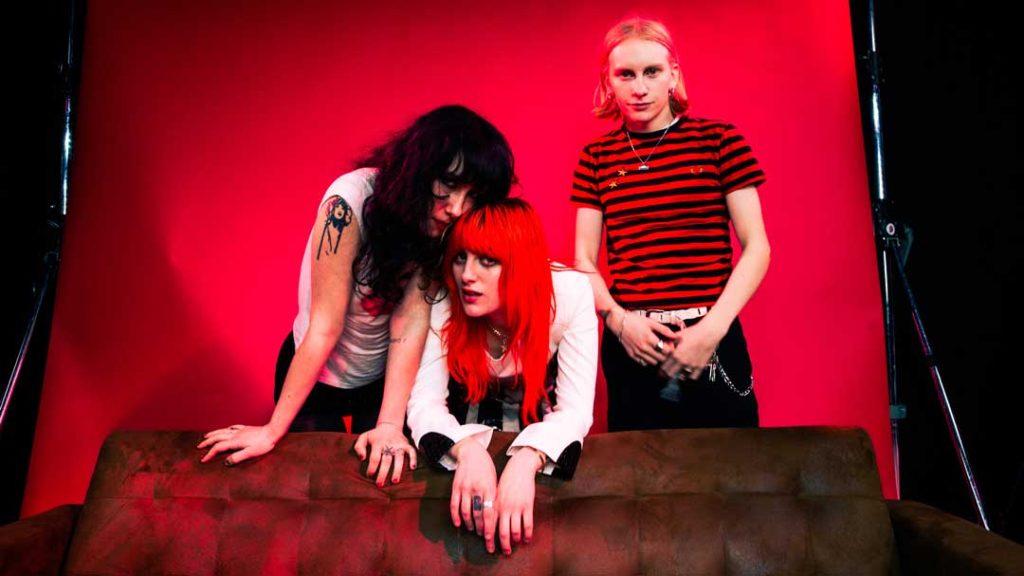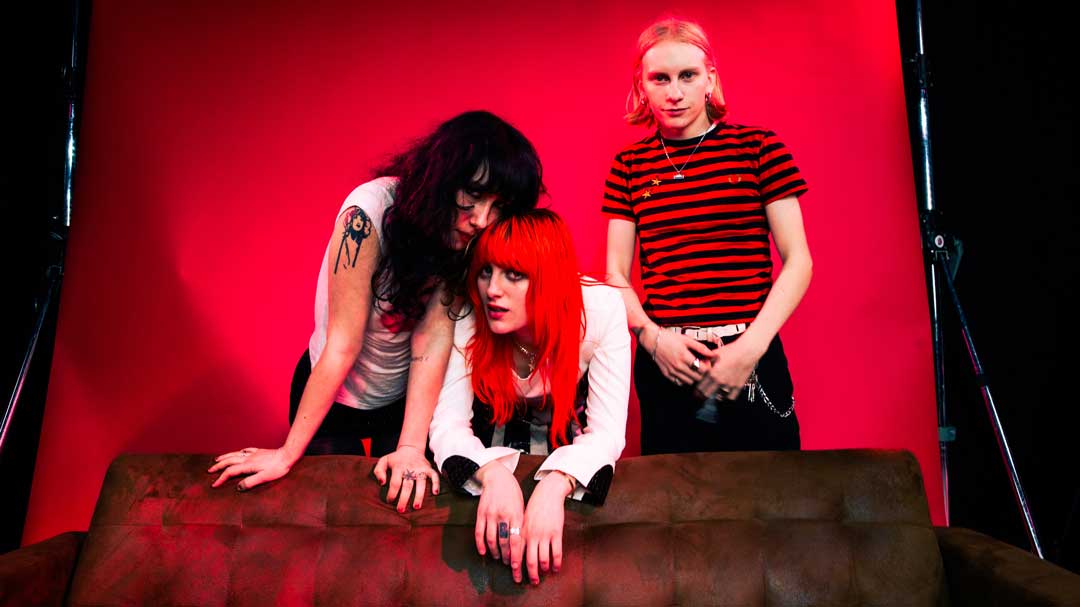
London, UK (June 20, 2025)—HotWax is in its element when playing live. The UK trio—vocalist/guitarist Tallulah Sim-Savage, bassist Lola Sam and drummer Alfie Sayers—released its debut album, Hot Shock, earlier this year and the group’s live energy is captured on every song.
Hot Shock was guided by a trio of producers that included multiple Grammy-winner Catherine Marks (Boygenius, Wolf Alice) and Steph Marziano (Hayley Williams, Let’s Eat Grandma), who worked together on the album at London’s RAK Studios, and Warpaint’s Stella Mozgawa, who recorded two of the album’s tracks at her studios in Joshua Tree, California.
Marks saw HotWax perform in the summer of 2023 at Third Man Records’ The Blue Basement in London. That show, she says, was “the inspiration for the album. It was the tiniest gig venue I’ve ever been to. It was the hottest day of summer. We were crammed in, and everyone was trying to vie for the air conditioning unit. Sweat was dripping from the walls. You couldn’t really see them, but the performance was so amazing. The sound was incredible. I wanted to hear that on record.”
Marziano had the opposite experience. She originally met the group in songwriting sessions, and “Hard Goodbye,” one of the first songs they wrote together, is a sonic departure from the rest of Hot Shock. Marziano saw HotWax perform a week later, and her reaction was, “Why didn’t you tell me?” she recalls. “We would have probably never written ‘Hard Goodbye’ had I seen them live.”
Marks’ alternative leanings and Marziano’s pop background provide a strong combination for HotWax, pulling the group in unpredictable directions. The songs were written prior to recording, in preparation for a week of preproduction at a London rehearsal studio. During that time, while the band played through the songs, Marks and Marziano dissected each one, deciding what tweaks to make.
GETTING READY FOR RAK
“Pre-production made [HotWax] really well-rehearsed,” explains Marks. “When they were in the studio recording, it was muscle memory. They could focus on performance rather than their parts. Also, it helped us focus on the way we were going to record it—what kind of tones, snare drum and hi-hats we were going to use, what pedals. It became this electric experience.”
“It was also nice to hear the band in the most bare-bones, bad-sounding way in an untreated room,” Marziano adds. “We listened to the parts and the arrangements, made changes, and gave the band time to practice. By the time recording happened, it was really seamless. We didn’t have loads of days at RAK, so we needed to go in very prepared.”
The pre-production sessions were recorded in Voice Memos. In between pre-production and recording, HotWax had two weeks to listen to the recordings, live with the arrangements, and make any final decisions about the songs.
“In the past, we have had productions where the guitar is super-layered up and the drums are super-quantized, and everything is perfect and so massive,” shares HotWax’s Sam, “but we realized that isn’t us, and that’s not our sound. Coming into the studio this time, we didn’t want more than three guitar tracks playing at any time. That’s because, one, it’s not realistic for us to play live, and two, it all starts to blur. We kept this very pure and even kept mistakes in.”
The recording at RAK’s Studio 2 was completed in 10 days. Studio 2’s control room is on the mezzanine level, above the live room, which has double-height ceilings. There are no booths, and, other than baffling the drums, HotWax came very close to replicating its live performance setup.
Says Marks, “Having the bass amp resonating, and the way it reacts to a room mic compressor, can add glue to a performance and sonics, as well as capturing the drums.”
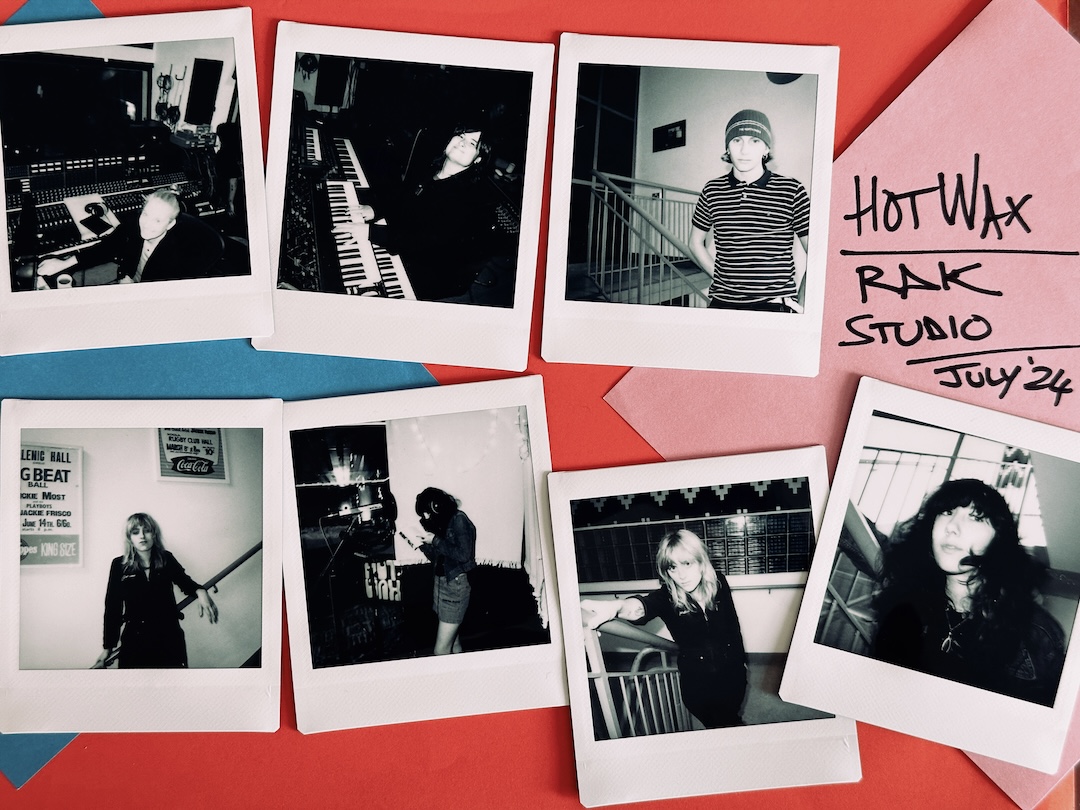
ROCKING AND RECORDING
“We would start by tracking drums with live guitar and bass, often not to a click,” Sam notes. “I was nervous at first, but it ended up being the only way that would’ve felt right. We recorded most of the effects—especially vocal reverbs and distortion—through the desk. It felt super analog, and then the monitor mixes are pretty much exactly where we wanted, so it felt organic and raw. That was the whole aim of the album. Catherine and Steph really made that happen.”
“I come from the world of wanting to go to click,” Marziano says. “Catherine was the one convincing me not to. By the end of the record, we’d swapped places.”
“They were so tight as a unit, you couldn’t tell if they were live with a click or not,” says Marks. “That’s why we decided to tempo map their performance rather than put it to a grid. There was a natural push and pull in between sections we wanted to maintain instead of sucking the life out of it.”
One of Marks’ key production approaches is to add live processing, mainly to stimulate inspiration. She finds that running distortion, delay, reverb or using pedals—specifically Audio Kitchen’s The Big Trees and The Flying Squirrel, which had a big impact in shaping the sound of Hot Shock—create different sonic reactions and provide something more granular and exciting in the artists’ headphones.
This gelled with the work HotWax did with Mogzawa in Joshua Tree. Says Sam, “Stella is an amazing drummer with so much feel and so easy to jam with. She also has an impressive drum machine and vintage gear collection. We wrote ‘Lights On’ there with her on drums. The main thing in that song is the bass sound that sounds like a synth. It came from this bass she had with flat wounds through a vintage chorus effect processor and Tallulah’s [Boss PS-6] Harmonist pedal. I love when sounds influence the writing of a song and the feel. Omar, her engineer, was great as well. He got everything sounding so organic and clear in such a subtle way; it fit the two songs we recorded so well.”
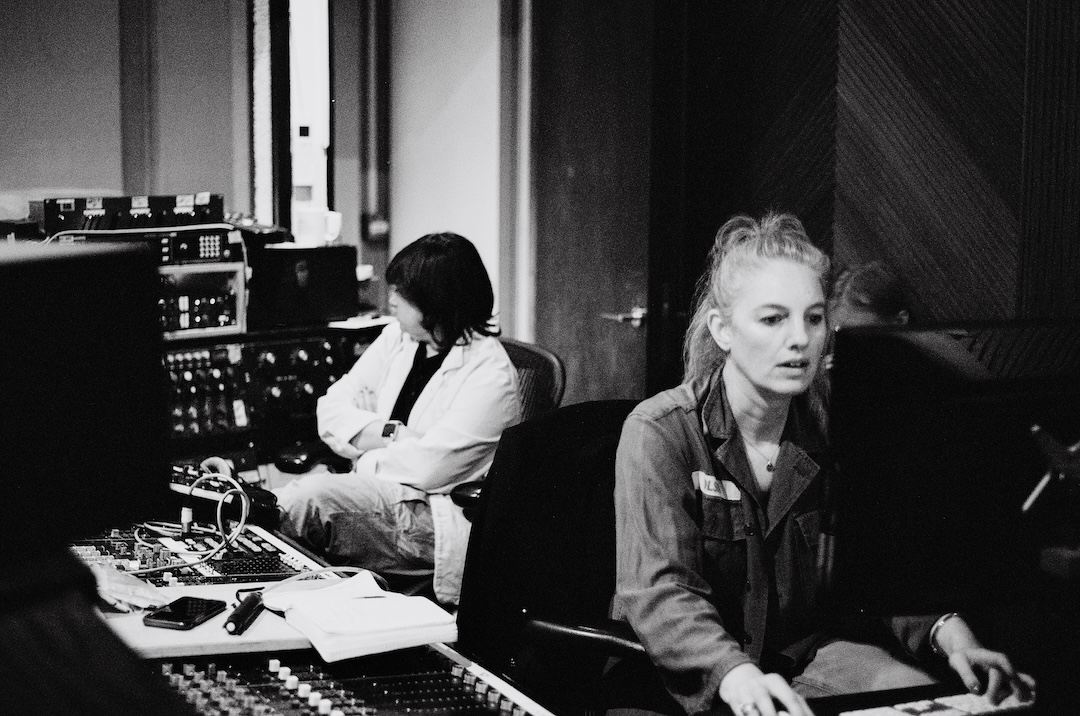
TRACKING ‘MAD’ DRUMS
Coming from a drumming background, Marziano is particular about that aspect of any artist’s sound and in Sayers, she found the ultimate drummer. Plus, having worked as an engineer at RAK for years, she knows its studios well.
“I have weird drum-miking things,” she admits. “One of them I take from Sylvia Massy, where you have two [very thin Earthworks] microphones at the end of a hose [one close, one far], and another, a little Fisher Price, which we sent to the Eventide H3000 on the ‘circle’ preset. It did this mad thing to the drums! Some songs it would be terrible; other songs, the greatest thing I’ve ever heard. It worked if we had baffles on the drum kit and a really tight snare, with a weird spacey thing in the background. The tightness of the room meant that we could do fun stuff because everything else was tight.”
The choice of microphones and placement allowed for creative experimentation. There are three smash microphones the producers namecheck: the Fisher Price (the ’70s version) on the drums; what Marziano called the “hot lips” microphone—a phone in the shape of lips—which would get moved around; and a harmonica microphone placed near the floor tom, above the kick drum. These three would not always get used, but they were able to build a drum sound around these esoteric choices.
Additionally, Sony microphones were placed around the room, high up, with varying levels of compression applied. Marks likes having these microphones floating, moving them depending on the song’s needs. A pair of Neumann U87s were also moved around on a song-by-song basis.
“We were recording a lot of microphones,” Marks says, “but not using all of them. The speed we were working at, having everything set up and a big palette to work from, we could make our choices as the songs were going down rather than waiting for something to be set up.”
A TOUCH OF HOTWAX LIVE
After a week of recording in this fashion, Marks and Marziano arranged for HotWax to perform to an audience in RAK’s larger Studio 1, with the intention of capturing the energy for Hot Shock.
“I was thinking, ‘How do 20 people change the sound of a room?’’’ Marks recalls. “What was so amazing about that Blue Basement gig was you have bodies absorbing the sound. There’s less reflection. What does that do? Also, what does that bring to the energy of the performance?”
The recording of the live performance in Studio 1 was set up as close as possible to how they were arranged in Studio 2, bar the drums, which were in their stage format rather than in the round. The audio was captured in one large session. This gave Marziano a better idea of what the album should sound like.
“We were halfway through, and at that point, you slightly lose the vision of the album,” she says. “The band having a gig in the middle of it, you understand, ‘This is the album. This is how people are perceiving it.’ A couple of the songs’ recordings were based on how they went down live.”
Keith Urban Brings A Nashville Classic Back to Life, Part 1
Marks has extensive mixing credits, but Hot Shock was handed to Neil Comber (M.I.A., Charli XCX) to mix. Comber was given roughs, which Marks points to as the blueprint. In general, she avoids reference mixes. “If I have to say it should sound like this, then I don’t think I’ve done my job,” she says.
Comber also was able to attend the Hot Shock live recording in RAK’s Studio 1, which helped him understand what he needed to do with his mix.
“I’m a big fan of live-sounding records, so this was right in my wheelhouse,” says Comber. “The gig they performed for the live recordings for the album at RAK gave me such an insight into what the band and Catherine and Steph were making. There is something about the way a live room compresses the sound and pushes it into your ears that is really hard to replicate in a 2-mix—but after seeing them play, that stuck in my head as the feeling the mixes needed to have.”
Comber found the rough mixes he was given to be very detail-oriented, with the riding of the room mics coming through strongly. This gave the sections different feelings and weight, according to Comber, who followed the producers’ push and pull of room mics, with a focus on keeping the sonic energy even across Hot Shock.
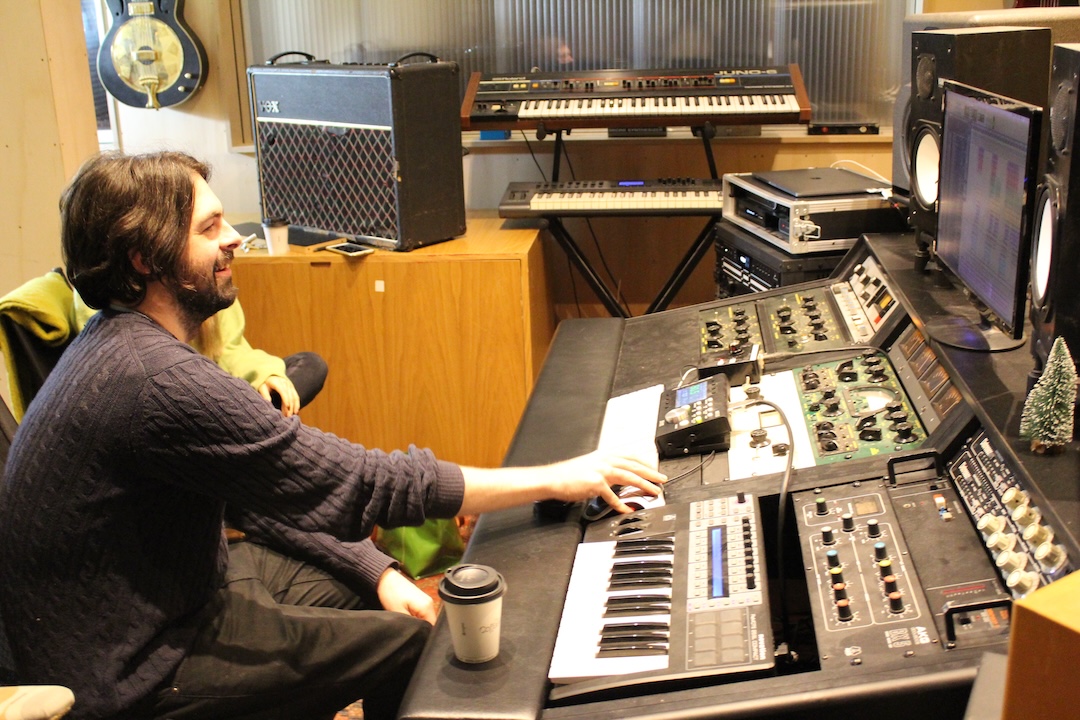
AN ‘UNPOLISHED’ MIX
“There were real tape delays and great plug-ins printed for vocal effects,” Comber says. “I really enjoyed swapping between those for different sections, having them all in but making one or the other more prominent in different spots. Being a three-piece band, the bass ends up part of the guitar sound a lot. I would use the different microphones on the bass to have the bottom end and midrange as almost two separate instruments.”
For HotWax’s unique combination of pop and heavy guitars, Comber focused on finding the balance between the two. For this, he had the classic UAD SSL 4000 G Buss Compressor across the mix and SSL plug-ins for the EQ. For compression on the guitar, he used Waves’ CLA-76 compressor/limiter, noting, “Hitting the compressors pretty hard and winding lots of bottom end and 3 kiloHertz punch into the guitars—those are my heavier guitar go-tos.”
Discover more great stories—get a free Mix SmartBrief subscription!
Also on the mix bus were the L3 Multimaximizer and FabFilter Pro-L 2. On the all-vocal group, Comber used the DynOne3 Dynamics plug-in. “These are things I would typically use for more hip-hop/pop mixes,” he explains, “but they worked great in bringing out some of the punch of the drums and letting the vocal really shine through on this album.”
“I grew up on records that weren’t polished,” Marks adds. “It was the humanness and the imperfections that made me feel something. I’m always encouraging artists to track live, to play together, to play off each other. If you’re a band, the way you play together is what makes you unique. Just being able to capture that, you are part of something special. I think we were part of something really special with HotWax.”
Says Sam, in summation, “There’s nothing exciting about perfect music because you can’t take it anywhere. It has nowhere to go and nothing to build from. This album is far from perfect—and that’s what makes it exciting.”
